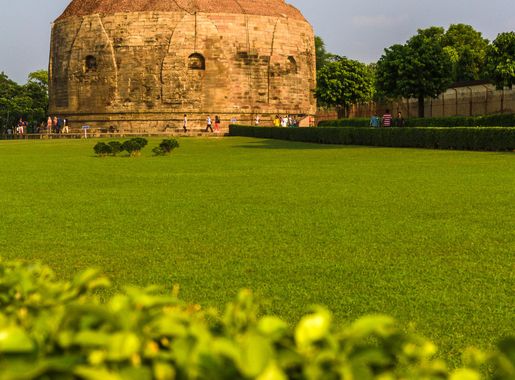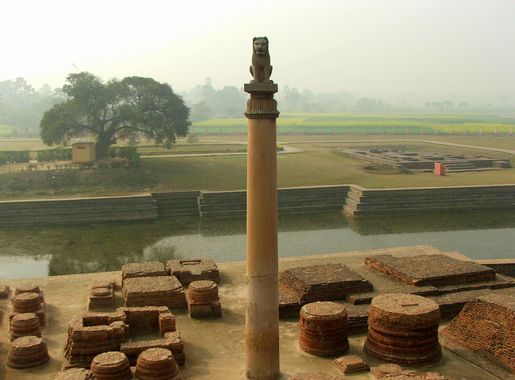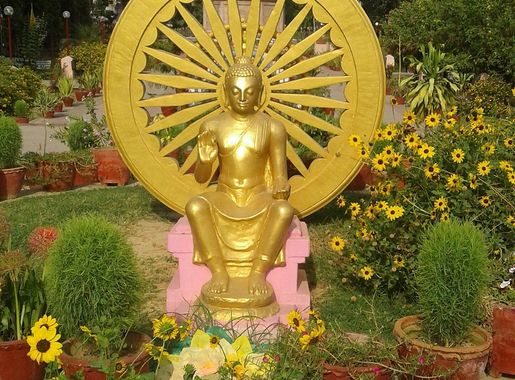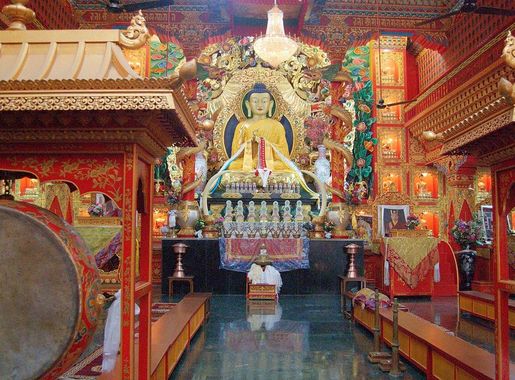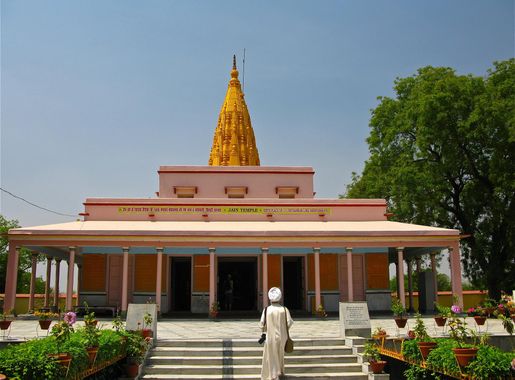
Sarnath: Where History and Spirituality Converge
Discover Sarnath in Varanasi, India: A serene destination where Buddha's first sermon, ancient stupas, and lush parks offer a profound spiritual and historical experience.
Welcome to Sarnath, a serene and historically rich neighbourhood located just 10 kilometers from the bustling city of Varanasi. This tranquil locale holds immense significance for Buddhists worldwide, as it is the site where Lord Buddha delivered his first sermon after attaining enlightenment. The Dhamek Stupa, a towering structure that stands as a testament to this pivotal moment in history, draws pilgrims and history enthusiasts alike. As you wander through Sarnath, you'll encounter the Mulagandha Kuti Vihar, a modern temple adorned with exquisite frescoes depicting scenes from Buddha's life. The temple's peaceful surroundings and the melodious chanting of monks create an atmosphere of profound spirituality. The nearby Sarnath Archaeological Museum offers an impressive collection of artifacts, including the famous Ashoka Pillar with its lion capital, which is now India's national emblem. Don't miss the chance to explore the lush Deer Park, where Buddha's first disciples gathered to hear his teachings. The park is a perfect spot for quiet reflection, surrounded by verdant greenery and the gentle rustle of leaves. Sarnath is not just a place of religious importance; it's also a sanctuary for those seeking solace and a deeper connection with history and spirituality.
Local tips in Sarnath
- Visit early in the morning to avoid crowds and experience the tranquility of Sarnath.
- Hire a local guide to gain deeper insights into the historical and religious significance of the sites.
- Wear comfortable shoes as you'll be walking a lot, especially in the Deer Park and around the stupas.
- Carry a bottle of water and some snacks, as there are limited options for refreshments within the neighbourhood.
- Respect the local customs and dress modestly, particularly when visiting temples and sacred sites.
Sarnath: Where History and Spirituality Converge
Welcome to Sarnath, a serene and historically rich neighbourhood located just 10 kilometers from the bustling city of Varanasi. This tranquil locale holds immense significance for Buddhists worldwide, as it is the site where Lord Buddha delivered his first sermon after attaining enlightenment. The Dhamek Stupa, a towering structure that stands as a testament to this pivotal moment in history, draws pilgrims and history enthusiasts alike. As you wander through Sarnath, you'll encounter the Mulagandha Kuti Vihar, a modern temple adorned with exquisite frescoes depicting scenes from Buddha's life. The temple's peaceful surroundings and the melodious chanting of monks create an atmosphere of profound spirituality. The nearby Sarnath Archaeological Museum offers an impressive collection of artifacts, including the famous Ashoka Pillar with its lion capital, which is now India's national emblem. Don't miss the chance to explore the lush Deer Park, where Buddha's first disciples gathered to hear his teachings. The park is a perfect spot for quiet reflection, surrounded by verdant greenery and the gentle rustle of leaves. Sarnath is not just a place of religious importance; it's also a sanctuary for those seeking solace and a deeper connection with history and spirituality.
Iconic landmarks you can’t miss
Archaeological Buddhist Remains of Sarnath
Explore the serene Archaeological Buddhist Remains of Sarnath, where the journey of Buddhism began—a perfect blend of history, spirituality, and tranquility.

Sarnath Buddhist Temple Varanasi
Explore the serene beauty and rich history of Sarnath Buddhist Temple, a must-visit heritage site in Varanasi, India.
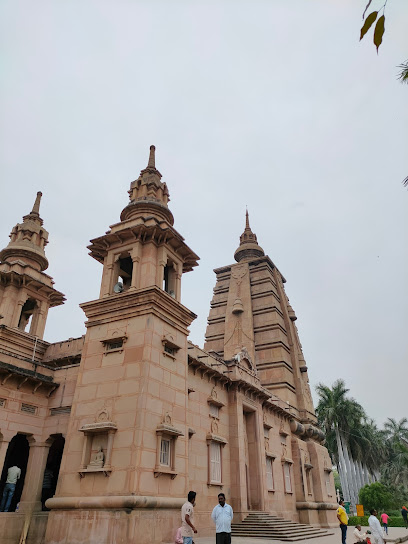
Sarnath Buddhist Temple
Explore the serene Sarnath Buddhist Temple, a UNESCO World Heritage site, and immerse yourself in the rich history of Buddhism in India.
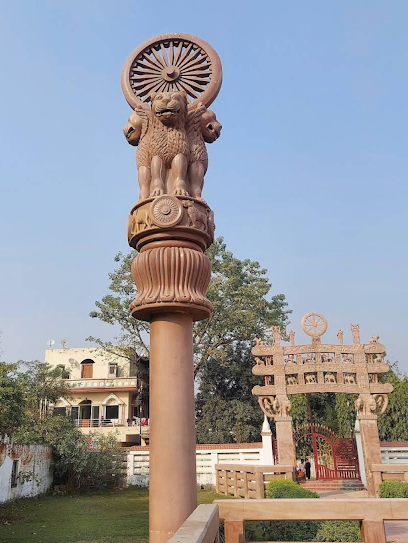
Chaukhandi Stupa
Explore the Chaukhandi Stupa, a historic monument in Varanasi that showcases ancient Buddhist architecture and serene surroundings.
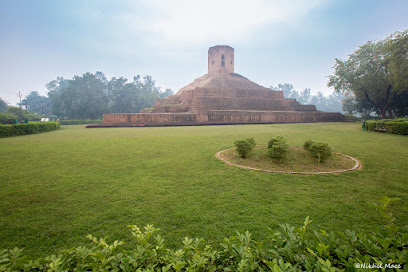
Sarnath Deer Park
Discover the serene beauty of Sarnath Deer Park, a unique blend of wildlife, history, and spirituality in Varanasi.
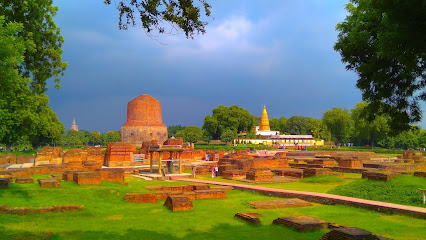
Ashoka Pillar
Discover the Ashoka Pillar in Sarnath, a remarkable historical landmark symbolizing India's rich cultural heritage and Buddhist history.
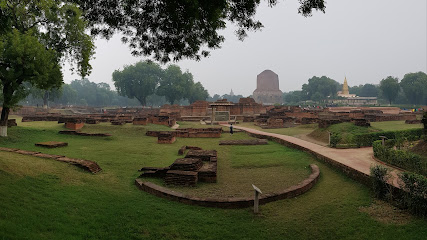
Prachin Baudha Sthal
Explore Prachin Baudha Sthal, an essential archaeological site in Sarnath, revealing the profound history of Buddhism and its architectural marvels.
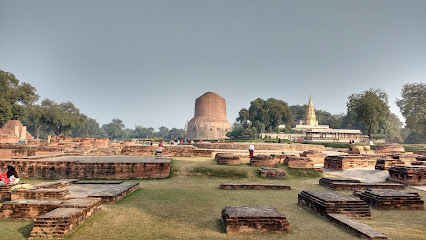
Golden Temple
Discover the Golden Temple in Sarnath - a serene Buddhist sanctuary rich in history, spirituality, and breathtaking architecture.

Garden of Spiritual Wisdom
Discover tranquility and spiritual enlightenment at the Garden of Spiritual Wisdom in Sarnath, a serene oasis rich in history and natural beauty.
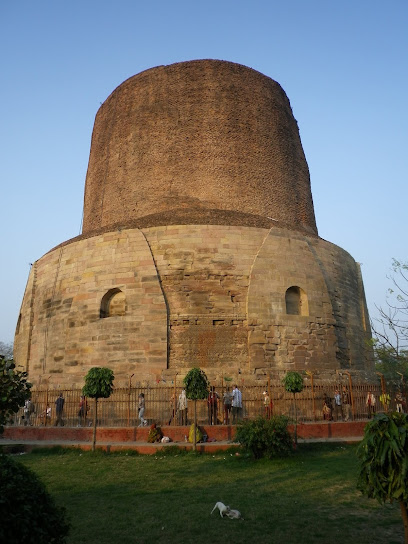
The Giant Buddha
Explore The Giant Buddha in Sarnath, a serene symbol of peace and spirituality, surrounded by lush gardens and rich Buddhist heritage.
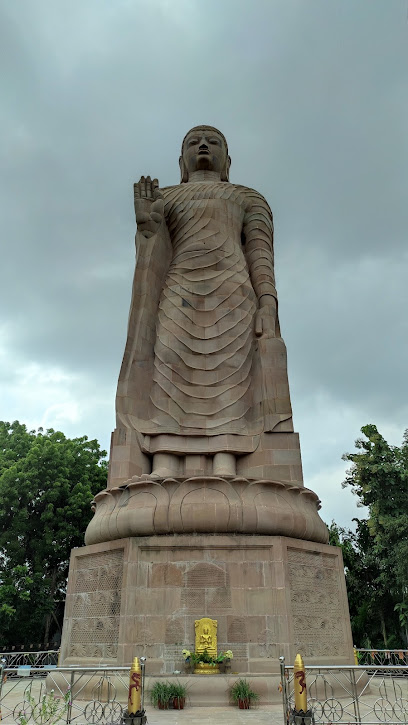
Dharmpal Monument
Experience the serenity and historical significance of the Dharmpal Monument in Sarnath, a must-visit destination for spiritual seekers and history enthusiasts.
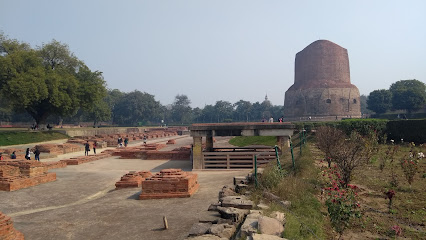
Sarnath Varanasi Uttar Pradesh
Discover the spiritual heart of Buddhism at Sarnath, a serene destination rich in history, culture, and tranquility, near Varanasi, Uttar Pradesh.
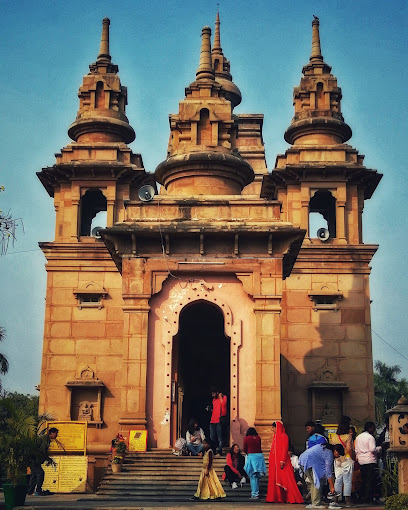
Sarnath archeology
Discover Sarnath, the birthplace of Buddhist teachings, and explore its ancient ruins, stupas, and tranquil gardens steeped in history.
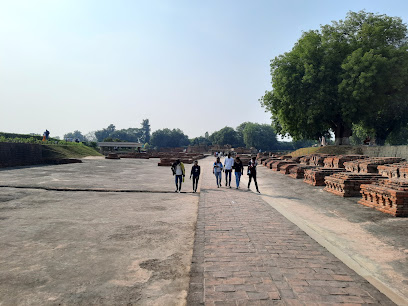
Unmissable attractions to see
Archaeological Buddhist Remains of Sarnath
Discover the profound legacy of Buddhism at Sarnath, where history and spirituality intertwine in a serene setting.

Sarnath Buddhist Temple
Explore the serene Sarnath Buddhist Temple, a historical gem where Lord Buddha delivered his first sermon, offering tranquility and rich heritage.
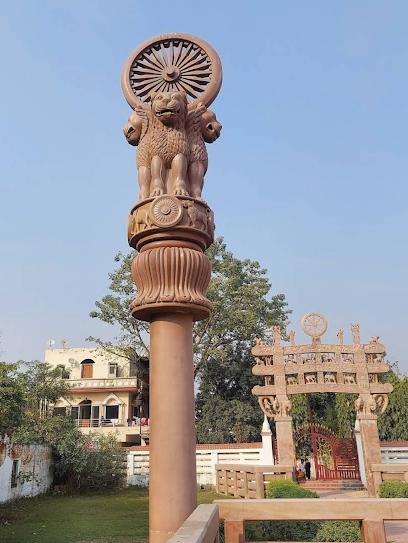
Dhamekh Stupa, Sarnath
Explore the Dhamekh Stupa, a monumental Buddhist site in Sarnath, Uttar Pradesh, showcasing rich history and spiritual significance.

Chaukhandi Stupa
Explore the stunning Chaukhandi Stupa, an ancient monument in Sarnath, representing the rich Buddhist heritage of India.
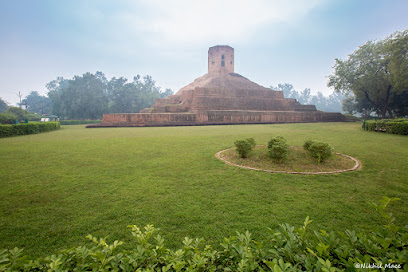
Sarnath Deer Park
Explore Sarnath Deer Park: A serene blend of nature and history near Varanasi, ideal for wildlife enthusiasts and cultural explorers alike.
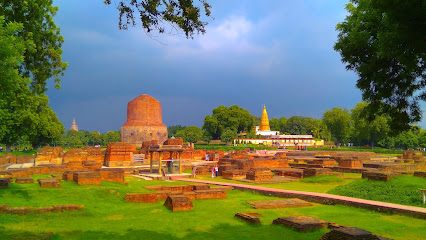
Ashoka Pillar
Discover the historical grandeur of Ashoka Pillar, a symbol of peace and the birthplace of Buddhism, located in serene Sarnath, Uttar Pradesh.
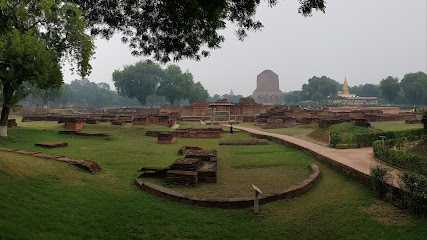
Tibetan Temple
Experience tranquility and spiritual enlightenment at the Tibetan Temple in Sarnath, a cultural gem in Varanasi showcasing Tibetan Buddhist traditions.
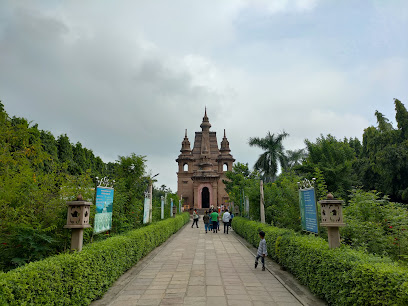
Golden Temple
Experience the serenity of the Golden Temple in Sarnath, a sacred site where Buddha's teachings resonate in every corner, inviting peace and reflection.
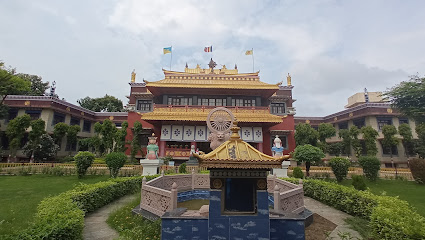
Garden of Spiritual Wisdom
Explore the serene pathways and spiritual teachings at the Garden of Spiritual Wisdom, a hidden sanctuary in Sarnath, Uttar Pradesh.
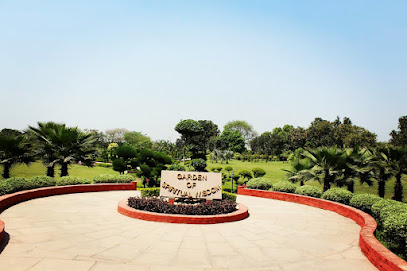
The Giant Buddha
Discover the tranquility of The Giant Buddha in Sarnath, a stunning Buddhist temple and a pivotal pilgrimage site steeped in history.
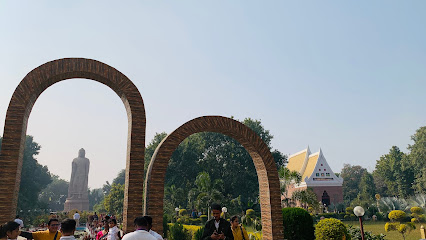
Essential places to dine
Restaurant UP-65
Experience the rich flavors of India at Restaurant UP-65 - A fine dining haven offering Indian, Chinese & Continental delicacies.

Vaishali Restaurant
Discover delicious Indian vegetarian cuisine at Vaishali Restaurant in Sarnath – an affordable gem perfect for tourists seeking local flavors.
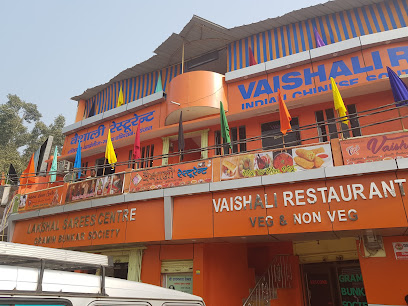
Rangoli Garden Restaurant
Discover delicious vegetarian cuisine and fast food options in a serene garden setting at Rangoli Garden Restaurant in Sarnath.
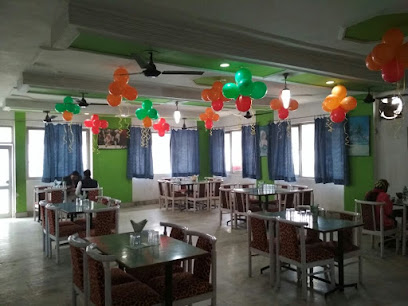
Shaakya Restaurant | Best Restaurant in Varanasi | Veg & Non-Veg
Discover diverse flavors at Shaakya Restaurant in Varanasi – where North Indian meets Continental cuisine amidst serene surroundings.
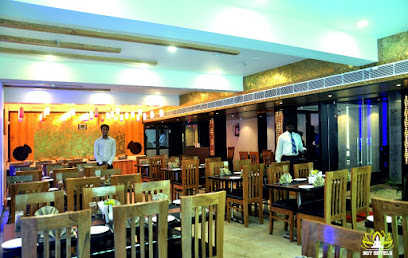
Bollywood Tadka Restaurant
Discover the essence of Indian cuisine at Bollywood Tadka Restaurant - where flavors meet Bollywood charm in Varanasi.
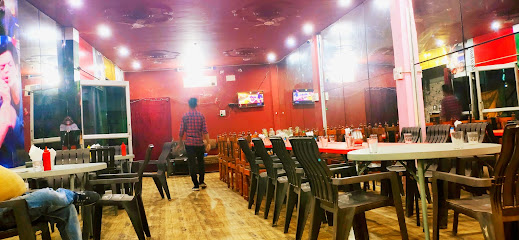
Veg Gali
Discover the flavors of vegetarian cuisine at Veg Gali in Varanasi – where North Indian meets American and Chinese delicacies.
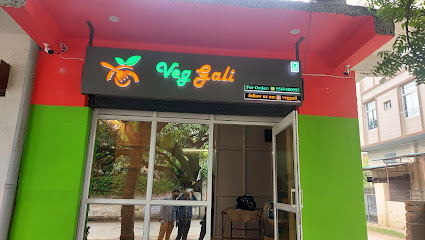
Lazania Restaurant
Experience delightful breakfasts at Lazania Restaurant, a family-friendly eatery near Sarnath Museum in vibrant Varanasi.
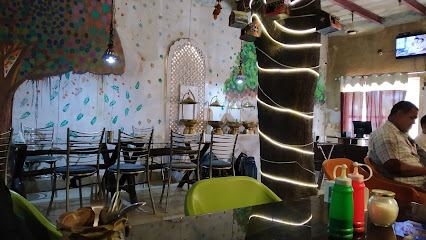
Green Hut Restaurant
Experience authentic Chinese flavors at Green Hut Restaurant in Sarnath – perfect for families seeking delicious fast food.
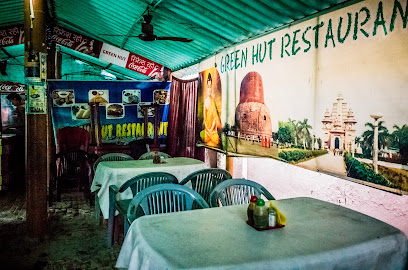
Cilantro Restaurant
Experience authentic Indian cuisine at Cilantro Restaurant in Varanasi - where tradition meets taste in every dish.
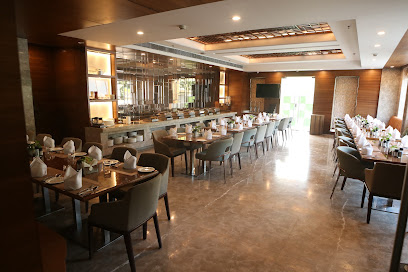
Kashi Gaon Restaurant - Unit of SARK Multimedia
Experience authentic Indian cuisine at Kashi Gaon Restaurant within the serene Buddha Theme Park in Sarnath, Varanasi.

Markets, malls and hidden boutiques
The Usee Shop
Discover exquisite sarees at The Usee Shop in Varanasi, where tradition meets elegance for an unforgettable shopping experience.

Baba Bob & Srijan Boutique
Explore the enchanting Baba Bob & Srijan Boutique for unique gifts, cosmetics, and home goods in the heart of Sarnath, Varanasi.

Sarnath Pet's Shop
Discover a delightful pet haven at Sarnath Pet's Shop, where passion for animals meets quality care in Varanasi.
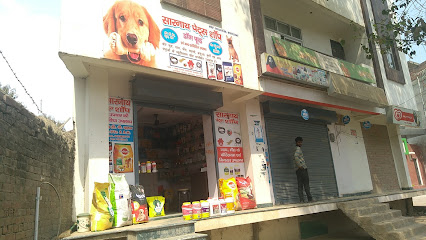
Kashi Bazaar
Discover the vibrant colors and traditions of India at Kashi Bazaar, a premier destination for authentic clothing and cultural treasures.
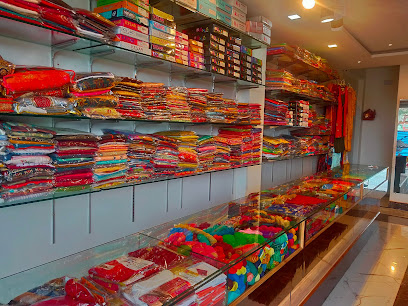
Cultural Banarasi Saree
Discover the rich heritage of Banarasi sarees at Cultural Banarasi Saree, a treasure trove of exquisite craftsmanship and vibrant designs in Varanasi.

Sarnath Silk Handicraft
Explore Sarnath Silk Handicraft for exquisite silk garments and authentic souvenirs reflecting the rich textile heritage of Varanasi.
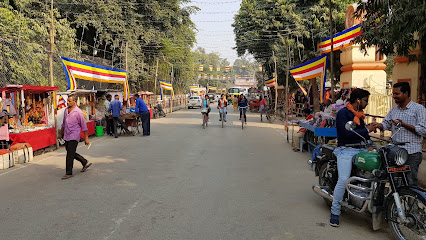
Sarnath Provision & General Store
Discover local flavors and essential goods at Sarnath Provision & General Store, your go-to stop near the historic Thai Temple.
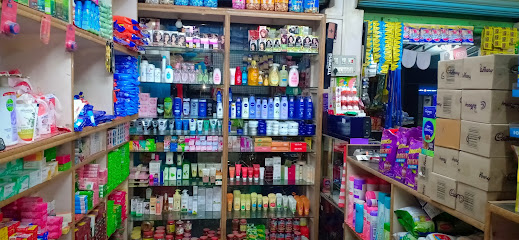
Sarnath Shop
Discover the essence of Indian tradition at Sarnath Shop, where exquisite sarees meet rich cultural heritage in the heart of Sarnath.
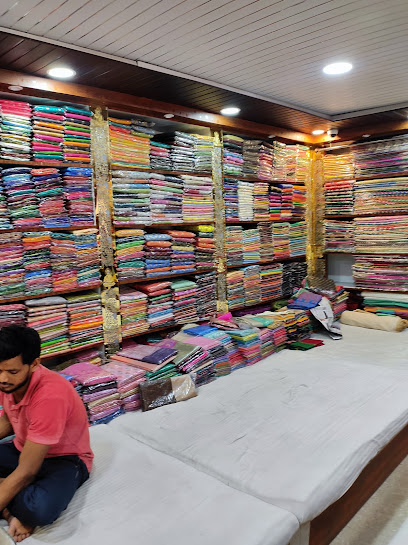
Isipatana Silk Emporium
Explore the artistry of silk weaving at Isipatana Silk Emporium in Sarnath, Varanasi, where each piece tells a story of tradition and craftsmanship.
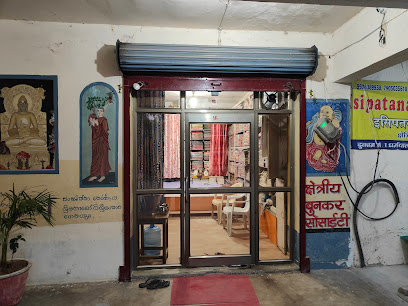
Gopal Kirana Store
Explore the authentic flavors of Sarnath at Gopal Kirana Store, your go-to grocery destination in Varanasi for local snacks and essentials.

Rajkumar Shop
Explore the charm of Rajkumar Shop in Sarnath, where local handicrafts and snacks await every traveler seeking a taste of Varanasi.
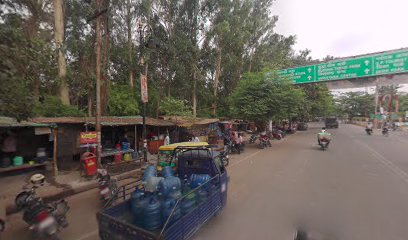
N V SHOPPE
Discover the vibrant N V Shoppe in Sarnath, Varanasi, where local culture meets convenience in a delightful shopping experience.

Om General Store
Explore Om General Store in Sarnath for unique cosmetics and local goods, a perfect blend of culture and craftsmanship in Varanasi.
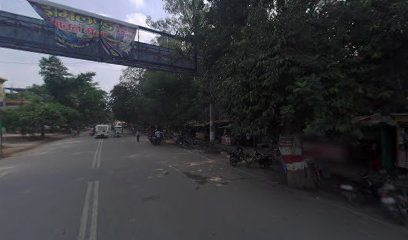
Essential bars & hidden hideouts
THE 3RD FLOOR BAR STOCK EXCHANGE
Experience the vibrant blend of nightlife, exquisite cuisine, and stunning views at The 3rd Floor Bar Stock Exchange in Varanasi.
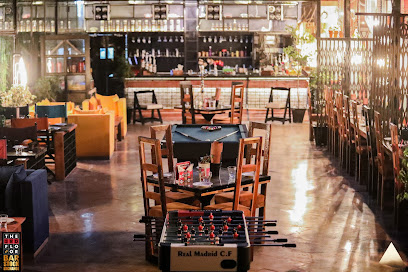
Cheers Bar & Restaurant - bar and restaurant in varanasi
Experience the vibrant flavors of Varanasi at Cheers Bar & Restaurant, a perfect blend of local cuisine and a lively atmosphere.
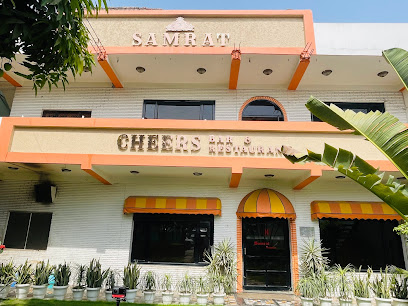
My Dream
Experience tranquility and fine beverages at My Dream lounge in Sarnath, Varanasi—a perfect retreat for relaxation after city exploration.

Shaakya Restaurant | Best Restaurant in Varanasi | Veg & Non-Veg
Experience the flavors of India at Shaakya Restaurant, Varanasi's finest destination for delicious vegetarian and non-vegetarian cuisine.
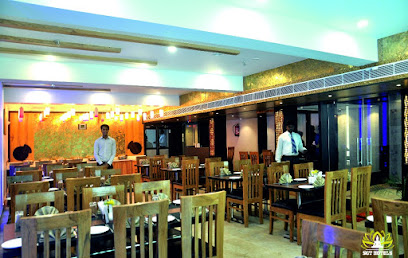
Flamingo Sky Bar
Discover the luxury of Flamingo Sky Bar in Varanasi, where breathtaking views meet exquisite dining in a vibrant atmosphere.
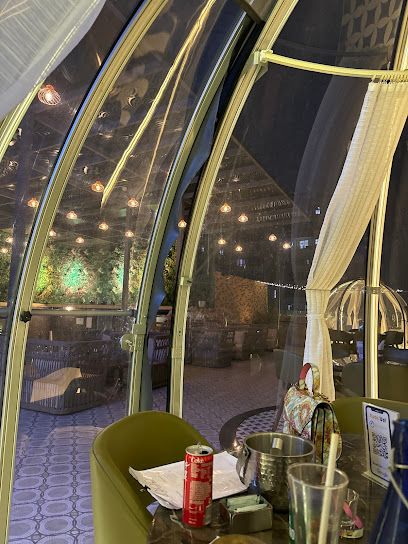
Beer Bar
Discover the lively Beer Bar in Varanasi, where local brews and vibrant atmosphere meet the rich culture of this ancient city.
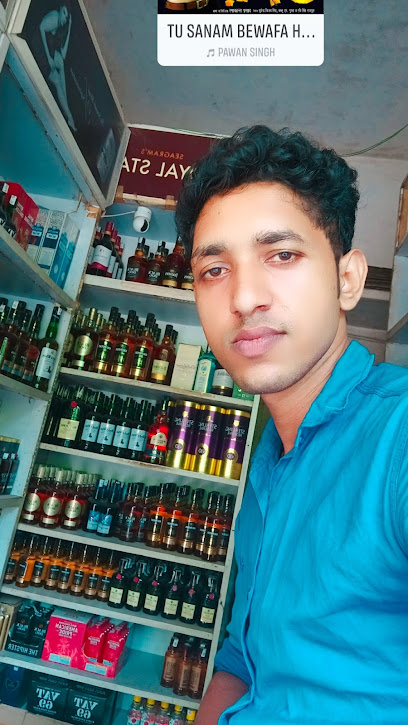
Rahul Anda
Discover the lively atmosphere and refreshing drinks at Rahul Anda, a must-visit bar in Uttar Pradesh for tourists seeking a memorable experience.
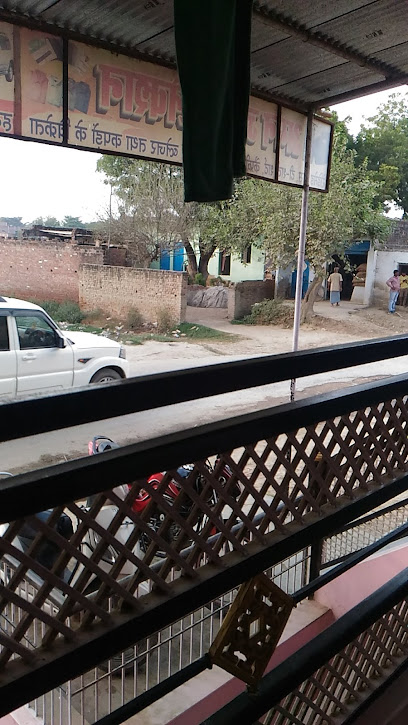
Tipsy Tales
Explore the culinary delights of Tipsy Tales in Sarnath, Varanasi, where exquisite flavors meet a cozy atmosphere for an unforgettable dining experience.
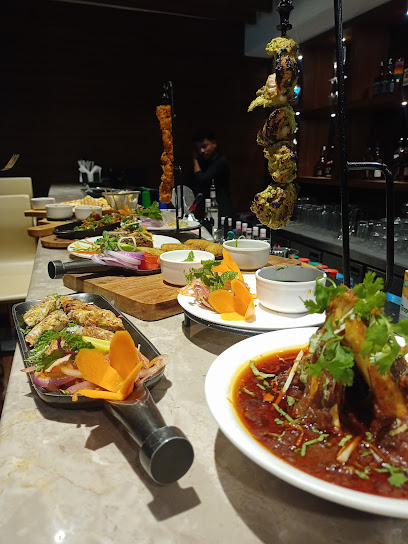
Kashi Gaon Restaurant - Unit of SARK Multimedia
Experience the authentic taste of Varanasi at Kashi Gaon Restaurant, located within the serene Buddha Theme Park.

Beer Shop Asapur
Explore the vibrant atmosphere of Beer Shop Asapur in Sarnath, Varanasi, where local culture meets refreshing beverages.
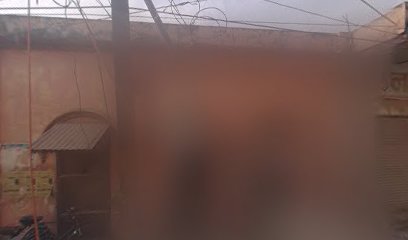
Local Phrases
-
- Helloनमस्ते
[namaste] - Goodbyeअलविदा
[alvida] - Yesहाँ
[haan] - Noनहीं
[nahin] - Please/You're welcomeकृपया
[krupaya] - Thank youधन्यवाद
[dhanyavad] - Excuse me/Sorryक्षमा कीजिये
[kshama keejiye] - How are you?आप कैसे हैं?
[aap kaise hain?] - Fine. And you?ठीक हूँ। आप?
[theek hoon. aap?] - Do you speak English?क्या आप अंग्रेज़ी बोलते हैं?
[kya aap angrezi bolte hain?] - I don't understandमुझे समझ नहीं आया
[mujhe samajh nahin aaya]
- Helloनमस्ते
-
- I'd like to see the menu, pleaseकृपया मेन्यू दिखाइए
[krupaya menu dikhaiye] - I don't eat meatमैं मांस नहीं खाता/खाती
[main maans nahin khata/khati] - Cheers!चियर्स!
[cheers!] - I would like to pay, pleaseकृपया मैं भुगतान करना चाहूँ
[krupaya main bhugtan karna chaahoon]
- I'd like to see the menu, pleaseकृपया मेन्यू दिखाइए
-
- Help!बचाओ!
[bachao!] - Go away!चले जाओ!
[chale jao!] - Call the Police!पुलिस को बुलाओ!
[police ko bulao!] - Call a doctor!डॉक्टर को बुलाओ!
[doctor ko bulao!] - I'm lostमैं खो गया/गई हूँ
[main kho gaya/gayi hoon] - I'm illमुझे बीमारी है
[mujhe bimari hai]
- Help!बचाओ!
-
- I'd like to buy...मैं खरीदना चाहूँगा/चाहूँगी...
[main khareedna chaahunga/chaahoongi...] - I'm just lookingमैं बस देख रहा/रही हूँ
[main bas dekh raha/rahi hoon] - How much is it?यह कितने का है?
[yah kitne ka hai?] - That's too expensiveयह बहुत महंगा है
[yah bahut mahnga hai] - Can you lower the price?क्या आप कीमत कम कर सकते हैं?
[kya aap keemat kam kar sakte hain?]
- I'd like to buy...मैं खरीदना चाहूँगा/चाहूँगी...
-
- What time is it?समय क्या हुआ है?
[samay kya hua hai?] - It's one o'clockएक बजे हैं
[ek baje hain] - Half past (10)दस बजे तक
[das baje tak] - Morningसुबह
[subah] - Afternoonदोपहर
[dopahar] - Eveningशाम
[shaam] - Yesterdayकल
[kal] - Todayआज
[aaj] - Tomorrowकल
[kal] - 1एक
[ek] - 2दो
[do] - 3तीन
[teen] - 4चार
[chaar] - 5पांच
[paanch] - 6छह
[chhah] - 7सात
[saat] - 8आठ
[aath] - 9नौ
[nau] - 10दस
[das]
- What time is it?समय क्या हुआ है?
-
- Where's a/the...?...कहाँ है?
[...kahan hai?] - What's the address?पता क्या है?
[pata kya hai?] - Can you show me (on the map)?क्या आप मुझे दिखा सकते हैं (नक्शे पर)?
[kya aap mujhe dikha sakte hain (naksha par)?] - When's the next (bus)?अगली (बस) कब है?
[agli (bas) kab hai?] - A ticket (to ....)एक टिकट (...के लिए)
[ek ticket (...ke liye)]
- Where's a/the...?...कहाँ है?
History of Sarnath
-
Sarnath is globally recognized as the site where Siddhartha Gautama, who became the Buddha, delivered his first sermon after attaining enlightenment in Bodh Gaya. This pivotal event, which took place around 528 BCE, marked the beginning of the Buddha's teaching and the establishment of the Buddhist community, known as the Sangha. The Dhamek Stupa, built to commemorate this event, stands as a significant historical monument, attracting pilgrims and tourists alike.
-
During the reign of Emperor Ashoka in the 3rd century BCE, Sarnath became a prominent center for Buddhism. Ashoka, who converted to Buddhism after the Kalinga War, commissioned various stupas and monasteries in Sarnath, reinforcing the region's importance as a pilgrimage site. The Ashoka Pillar, featuring inscriptions that promote Buddhist principles, remains a symbol of this era's cultural and religious significance.
-
After the decline of Buddhism in India around the 12th century, Sarnath fell into obscurity and neglect. The ruins of the once-thriving monastic complex were largely forgotten until the 19th century, when British archaeologists began systematic excavations. This rediscovery sparked renewed interest in Buddhist history and led to the restoration of several important structures, including the Dhamek Stupa and the Mulagandhakuti Vihar.
-
The 20th century witnessed a resurgence of interest in Buddhism and its teachings, resulting in Sarnath becoming a focal point for Buddhist scholars and practitioners globally. The establishment of modern monasteries and educational institutions, such as the Central Institute of Higher Tibetan Studies, has further solidified Sarnath's status as an essential site for Buddhist learning and culture.
-
Today, Sarnath is not only a pilgrimage site but also a vibrant center for cultural exchange. The annual Buddha Jayanti celebrations attract thousands of visitors, showcasing traditional music, dance, and teachings. The neighborhood reflects a blend of ancient heritage and modern aspirations, with ongoing efforts to preserve its historical sites while promoting tourism and education.
Sarnath Essentials
-
Sarnath is located approximately 10 kilometers northeast of Varanasi city center. The easiest way to reach Sarnath is by taxi or auto-rickshaw, which can be hired from various parts of Varanasi. Local buses also run from the city to Sarnath, providing a more economical option. For those preferring a leisurely approach, bicycles can be rented in Varanasi and cycled to Sarnath, allowing you to enjoy the local scenery along the way.
-
Sarnath is a compact area, making it easy to explore on foot. Many of the key attractions, such as the Dhamek Stupa and the Archaeological Museum, are within walking distance of each other. Bicycle rentals are available for those wishing to cover more ground or for a unique experience. Auto-rickshaws are also available for short distances and are a convenient way to navigate the area.
-
Sarnath is generally a safe neighborhood for tourists. However, it is advisable to remain cautious, especially in crowded areas. Petty crimes like pickpocketing can occur, so it’s wise to keep personal belongings secure. Avoid wandering alone late at night, especially in less populated areas. While there are no specific high-crime zones targeting tourists, being vigilant is always advisable.
-
In case of an emergency, dial 100 for police assistance or 108 for medical emergencies. Local hospitals and clinics are available in Varanasi, with several pharmacies in Sarnath offering basic medical supplies. It’s advisable to have travel insurance that covers medical emergencies and to keep emergency contact numbers easily accessible.
-
Fashion: Do dress modestly, especially when visiting religious sites. Avoid revealing clothing. Religion: Do respect local customs and traditions; refrain from touching religious artifacts unless invited. Public Transport: Do be courteous and offer your seat to elderly passengers. Don’t eat or drink on public transport. Greetings: Do greet locals with a friendly smile and 'Namaste.' Don’t assume everyone speaks English; learning a few Hindi phrases can be helpful. Eating & Drinking: Do try local vegetarian dishes, which are widely available. Don’t drink tap water; opt for bottled water to avoid health issues.
-
To experience Sarnath like a local, visit the bustling markets for fresh produce and local handicrafts. Engage with local monks at the monasteries to learn about Buddhism and its significance in the area. Attend meditation sessions if offered, as they provide insight into the spiritual practices of the region. Don't miss the evening prayer ceremonies that can offer a unique glimpse into local religious life. Sampling local tea and snacks at roadside stalls can enhance your cultural experience.
Trending Landmarks in Sarnath
Nearby Cities to Sarnath
-
Things To Do in Patna
-
Things To Do in Lucknow
-
Things To Do in Chitwan
-
Things To Do in Lumbini
-
Things To Do in Kanpur
-
Things To Do in Bandipur
-
Things To Do in Ranchi
-
Things To Do in Pokhara
-
Things To Do in Gorkha
-
Things To Do in Patan
-
Things To Do in Kathmandu
-
Things To Do in Bhaktapur
-
Things To Do in Nagarkot
-
Things To Do in Jabalpur
-
Things To Do in Namche Bazaar

